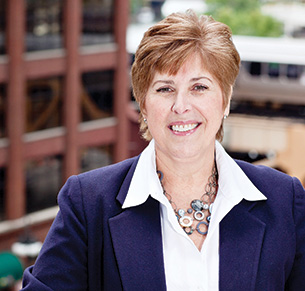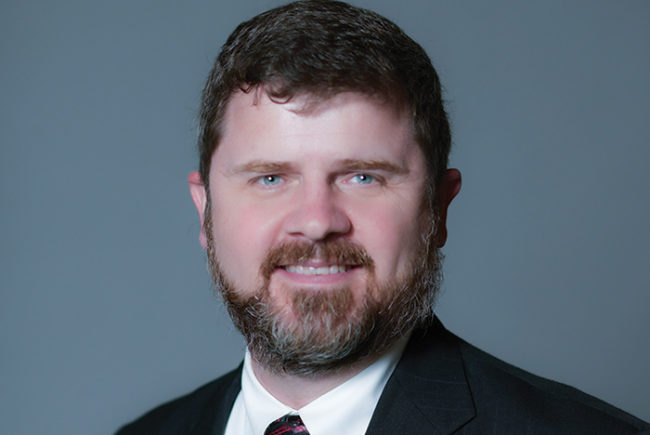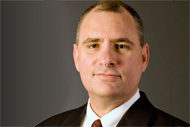 |
|
Patti Costello, executive director of the Association for the Healthcare Environment Photo courtesy of AHE |
Patti Costello, executive director of the Association for the Healthcare Environment (AHE), outlines where her organization is headed and how its members will respond to future challenges while continuing to maintain safe patient care areas and improve patient satisfaction levels.
What will AHE's focus be over the next couple of years?
Key member-identified areas in the AHE strategic plan include such themes as shaping professional practice, advancing and promoting environmental services (ES), and increasing awareness of both the AHE and the profession. Within each theme, committees will focus on competency requirements as well as education and training not only for seasoned professionals with emphasis on mentoring, but also fostering the next generation of environmental services leaders. We are also exploring strategies to collaborate with other like-minded organizations.
What are some of the greatest challenges environmental services directors will face over the next several years? How will AHE help members to meet these challenges?
The pace at which change is occurring is one major challenge. While not unique to our members, ES teams are under pressure to turn rooms more quickly and care for the environment with fewer resources. There doesn't seem to be widespread acknowledgement of the data that support the environment as key to improved satisfaction scores and outcomes with respect to reducing infection rates. In addition, there have been many secondary roles and responsibilities added to ES director jobs, such as grounds, sustainability, safety, patient transport and fleet management. Professionals are asking what it means today to be an ES director and what the core competencies are associated with this job. One of AHE's initiatives is to fully define the core job competencies and lay out the career progression for ES from the technician level to leadership. There's a science behind the front-line work and leadership skills needed to manage the department, so it's time AHE defines the skills and education needed across the continuum.
How is AHE addressing with members the increased emphasis on patient satisfaction and improving HCAHPS scores?
We've been addressing this for a few years now. We developed several educational programs, from webinars to an online program as well as multiple sessions at the EXCHANGE conference. The programs not only provide context to the origin of HCAHPS, but also strategies and tactics to elevate patient satisfaction scores. These are just a few of the many resources available to ES professionals.
What are the main areas of emphasis for this year's AHE EXCHANGE conference?
Members of the EXCHANGE planning committee have designed a broad spectrum of programming, including such topics as infection prevention, pharmaceutical waste, HCAHPS and new technologies, general management and leadership. There are other sessions related to the ES role within health care reform and how ES can drive improvements. By delving deeper, we will discover how that relates to redefining the "H" [hospital] and how it does business. It is important that AHE prepare its members to recognize how they fit into the bigger health care picture and how to play a vital role in ensuring a positive experience for the patient. The keynote and general sessions will be geared primarily toward management, leadership and motivational techniques.
Has AHE's move to provide free educational programming to members been successful and will this continue?
Free education has been an AHE goal for probably 10 years. ES doesn't get much in the way of education and training dollars and the department is often overlooked and undervalued. Members have wanted free education for a long time but, strategically, it took a while to take that step. Association members, in general, expect a certain amount of information and education from their organization free of charge. In 2013, AHE formed the ENGAGE Robust Education Platform for Professionals Caring for Healthcare Environments and we were able to expand the free concept to nine webinars and eight online programs due to generous sponsorship by Clorox Healthcare. An association has an enormous responsibility to deliver on the value proposition with respect to high-quality, relevant content. Doing so comes with developmental costs, as well as a lot of time, effort and technical expertise. AHE members are fortunate to receive this level of support from sponsors, enabling us to continue to offer a variety of educational offerings in different modalities.
Since we've been able to offer free education, we've had an incredibly positive response from the membership. This benefit has attracted new members across all levels of experience who may not have joined a year ago. It has also increased our membership retention rate. I don't see our changing this educational benefit except perhaps to add some items not on the sponsored platform at a nominal fee. One challenge, though, with free education is keeping the portfolio new and fresh. So we are also branching out to partner with other organizations to be able to share their relevant educational content.
I encourage members to tap into all of the resources that AHE and the American Hospital Association offer. The AHA Personal Membership Groups offer the best resources across the continuum of disciplines. Members should be spreading the news to colleagues and encouraging them to join.
How does the AHE address sustainability issues today and what resources do you provide for members?
The Sustainability Roadmap for Hospitals (www.sustainabilityroadmap.org), a joint project among the American Society for Healthcare Engineering, AHE and the Association for Healthcare Resource & Materials Management, is the first place members should go if they're looking for strategies to invest in sustainability, best practices or performance improvement measures related to sustainable operations. When it comes to compliance issues related to sustainability, we direct our visitors to the Healthcare Environmental Resource Center (www.hercenter.org), where they can search for compliance requirements by state. AHE also offers publications and educational programs.
We know that sustainability is a big area for potential cost savings that can be diverted to enhance patient care. AHE has been involved in sustainability and environmental preservation since 1999. While sustainability and sustainable operations haven't received much attention until recently, it is worth taking a long, hard look. Organizations can realize hard-dollar savings by purchasing wisely, reducing waste streams, cutting energy costs and more.
AHE has a lot of exciting projects in the pipeline all identified by the members. It's an exciting time for AHE and we trust that members will find it equally as exciting.
Bob Kehoe is the associate publisher of Health Facilities Management.
The Costello File
CV
• Executive director since 2001 of the Association for the Healthcare Environment, a Personal Membership Group of the American Hospital Association
• Nineteen years with the AHA, including previous roles with the American Society for Healthcare Engineering and the American Society for Healthcare Central Service Professionals
• Conducted more than 250 hands-on workshops and seminars at both the national and chapter levels, covering such topics as employee engagement and motivation, health care environmental services, infection prevention, food service sanitation and staffing
• Contributed to published works in both health care and in commercial food safety and served as contributing author to food service and sterile processing training manuals




